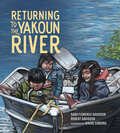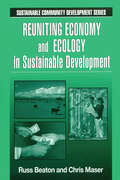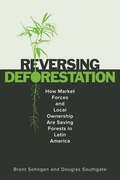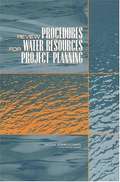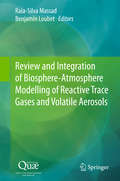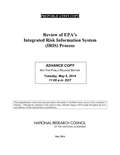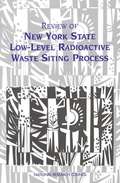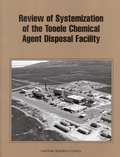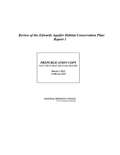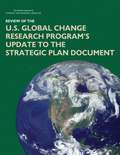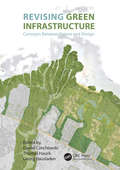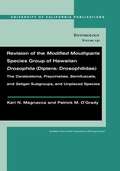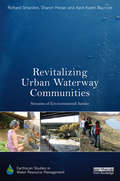- Table View
- List View
Returning to the Yakoun River (Sk'ad'a Stories Series)
by Robert Davidson Sara Florence DavidsonBased on author Sara Florence Davidson&’s childhood memories, this illustrated story captures the joy and adventure of a Haida fish camp.Every summer, a Haida girl and her family travel up the Yakoun River on Haida Gwaii, following the salmon. While their father fishes, the girl and her brother spend their time on the land playing and learning from Tsinii (Grandfather).
Returning to the Yakoun River (Sk'ad'a Stories Series)
by Sara Florence Davidson Robert DavidsonBased on author Sara Florence Davidson’s childhood memories, this illustrated story captures the joy and adventure of a Haida fish camp.Every summer, a Haida girl and her family travel up the Yakoun River on Haida Gwaii, following the salmon. While their father fishes, the girl and her brother spend their time on the land playing and learning from Tsinii (Grandfather).
Reuniting Economy and Ecology in Sustainable Development (Sustainable Community Development Ser. #7)
by Charles R. BeatonReuniting Economy and Ecology in Sustainable Development is part of a series on the various aspects of sustainable development, where "community" focuses on the primacy and quality of relationships among people sharing a particular place and between people and their environment. "Development" means personal and social transformation to a higher level of consciousness and a greater responsibility to be one anothers keepers, and "sustainability" is the act whereby one generation saves options by passing them to the next generation, which saves options by passing them onto the next and so on. The vision put forth in this book is one of melding ecology and economy into a unifying concept of social-environmental sustainability. The author suggests that dividing ecology and economy conceptually will destroy society as we know it. Our task as adults is to repair the environment for the children who must inherit it.The link between economics and ecology and the immense potential of that connection to influence the process of change within communities is the focus of this book. The authors theorize that in a healthy, future-oriented community there is a dominant role for sustainability. Each of these four concepts - economics, ecology, community and sustainability - are intimidating on their own. There has been volumes written on each topic separately but very little written on how they are connected in relation to the environment. Reuniting Economy and Ecology makes those connections and provides a base for finding solutions to achieving sustainable communities.
Reuse of Materials and Byproducts in Construction
by Alan RichardsonThe construction industry is the largest single waste producing industry in the UK. Ensuring a supply chain of recycled materials affords many potential gains, achieved through: reducing the material volume transported to already over-burdened landfill sites, possible cost reductions to the contractor/client when considering the landfill tax saved and the potential for lower cost material replacements, a reduction in the environmental impact of quarrying and the saving of depleting natural material resources. Reuse of Materials and Byproducts in Construction: Waste Minimization and Recycling addresses use of waste and by products in the construction industry. An over view of new "green" design guides to encourage best practice will be examined and current legislation that channels on site practices, such as site waste management plans. Fundamental individual construction materials are discussed and the process of reforming by products and waste products into new construction materials is investigated, examining the material performance, energy required to convert waste into new products and viability of recycling. The main range of constructional materials will be examined. Aimed at postgraduate students, lecturers and researchers in construction and civil engineering, the book will also be of interest to professional design practices.
Reusing Things (Making a Difference)
by Sue BarracloughDiscover how to make a difference to the planet by reusing things, reducing garbage, recycling materials, and respecting our world. Find out how you can play an active part, from repairing things, to giving unwanted items away.
Revenant Ecologies: Defying the Violence of Extinction and Conservation
by Audra MitchellEngaging a broad spectrum of ecological thought to articulate the ethical scale of global extinction As global rates of plant and animal extinctions mount, anxieties about the future of the earth&’s ecosystems are fueling ever more ambitious efforts at conservation, which draw on Western scientific principles to manage species and biodiversity. In Revenant Ecologies, Audra Mitchell argues that these responses not only ignore but also magnify powerful forms of structural violence like colonialism, racism, genocide, extractivism, ableism, and heteronormativity, ultimately contributing to the destruction of unique life forms and ecosystems. Critiquing the Western discourse of global extinction and biodiversity through the lens of diverse Indigenous philosophies and other marginalized knowledge systems, Revenant Ecologies promotes new ways of articulating the ethical enormity of global extinction. Mitchell offers an ambitious framework—(bio)plurality—that focuses on nurturing unique, irreplaceable worlds, relations, and ecosystems, aiming to transform global ecological–political relations, including through processes of land return and critically confronting discourses on &“human extinction.&” Highlighting the deep violence that underpins ideas of &“extinction,&” &“conservation,&” and &“biodiversity,&” Revenant Ecologies fuses political ecology, global ethics, and violence studies to offer concrete, practical alternatives. It also foregrounds the ways that multi-life-form worlds are actively defying the forms of violence that drive extinction—and that shape global efforts to manage it. Retail e-book files for this title are screen-reader friendly with images accompanied by short alt text and/or extended descriptions.
Revenge of the Happy Campers: Nature Versus Triplets (The Brewster Triplets)
by Jennifer ZieglerIt's triplets versus nature in the latest Brewster Triplets adventure from fun, funny Jennifer Ziegler!The Brewster triplets, Dawn, Darby, and Delaney, would usually be thrilled to spend a week with their beloved Aunt Jane. She's fun and fearless and fascinating, and she loves to hang out with them. But Aunt Jane is taking the girls somewhere they've never been before . . . camping!It's one disaster after another, whether they're sinking canoes in the lake at the run-down campground, being attacked by fire ants, or failing to pitch a tent that stays upright. Worst of all, they meet a group of boys who think that their oldest brother is going to be president one day - when clearly, that's Dawn's destiny. Before they know it, the Brewster triplets are caught up in the girls-versus-boys Great Camping Challenge . . . only some are more eager to win than others. Can they beat the boys, prove to Aunt Jane that they really are happy campers, and not get into a horrible sister fight?Six times the campers means six times the calamity in the latest Brewster triplets adventure!
Reversing Deforestation: How Market Forces and Local Ownership Are Saving Forests in Latin America
by Douglas Southgate Brent SohngenDire reports of surging deforestation in the Brazilian Amazon appear often in international headlines, with commentators decrying the destruction of tree-covered habitats as an act of environmental vandalism. Although forest losses are alarming, broader trends are bending in the direction of forest recovery. In this book, Brent Sohngen and Douglas Southgate address the long-term recovery of forests in Latin America. The authors synthesize trends in demography, agricultural development, and technological change, and argue that slower population growth and increasing crop and tree yields—in conjunction with protecting local ownership of natural resources—have encouraged forest transition. This book explores how market forces, ownership arrangements, and the enforcement of property rights have influenced this shift from net deforestation to net afforestation. Forest transitions have happened before, such as the recovery of tree-covered habitats in Europe and the United States. Signs of a similar transformation in land use are now present in Latin America. Ending deforestation requires a strengthening of forest dwellers' property rights while ensuring that biodiversity conservation is no longer treated as a value-less externality. The resulting forest landscape, actively managed for ecosystem services, will be more resilient, as is needed to overcome climate change.
Revery: A Year of Bees
by Jenna ButlerI hope you're okay in there, lovelies. I hope you're warm. After five years of working with bees on her farm in northern Alberta, Jenna Butler shares with the reader the rich experience of keeping hives. Starting with a rare bright day in late November as the bees are settling in for winter she takes us through a year in beekeeping on her small piece of the boreal forest. Weaving together her personal story with the practical aspects of running a farm, she takes us into the worlds of honeybees and wild bees. She considers the twinned development of the canola and honey industries in Alberta and the impact of crop sprays, debates the impact of introduced flowers versus native flowers, the effect of colony collapse disorder, and the protection of natural environments for wild bees. This is also the story of women and bees, and how beekeeping became Jenna Butler's personal survival story.
Review Of Chemical Agent Secondary Waste Disposal And Regulatory Requirements
by National Research Council of the National AcademiesUnder the direction of the U.S. Army's Chemical Materials Agency (CMA) and mandated by Congress, the nation is destroying its chemical weapons stockpile. Large quantities of secondary waste are being generated in the process, and managing these wastes safely and effectively is a critical part of CMA's weapons disposal program. To assist, the CMA asked the NRC to examine the environmental and regulatory requirements that secondary waste treatment is subject to, and to assess best practices by industry in meeting such requirements for similar facilities. This book presents an overview of secondary wastes from chemical agent disposal facilities (CDF), a comparison of CDF and industry experience, site-specific analysis of major secondary waste issues, an examination of closure wastes, and findings and recommendations.
Review Procedures for Water Resources Project Planning
by National Research CouncilA Review Procedures For Water Resources Project Planning
Review and Evaluation of Alternative Chemical Disposal Technologies
by National Research CouncilIn 1994 the National Research Council published Recommendations for the Disposal of Chemical Agents and Munitions, which assessed the status of various alternative destruction technologies in comparison to the Army's baseline incineration system. The volume's main finding was that no alternative technology was preferable to incineration but that work should continue on the neutralization technologies under Army consideration.In light of the fact that alternative technologies have evolved since the 1994 study, this new volume evaluates five Army-chosen alternatives to the baseline incineration system for the disposal of the bulk nerve and mustard agent stored in ton containers at Army sites located in Newport, Indiana, and Aberdeen, Maryland, respectively. The committee assessed each technology by conducting site visits to the locations of the technology proponent companies and by meeting with state regulators and citizens of the affected areas. This volume makes recommendations to the Army on which, if any, of the five technologies has reached a level of maturity appropriate for consideration for pilot-scale testing at the two affected sites.
Review and Integration of Biosphere-Atmosphere Modelling of Reactive Trace Gases and Volatile Aerosols
by Raia-Silva Massad Benjamin LoubetWhen considering biosphere-atmosphere exchange of trace gases and volatile aerosols, significant advances have been made both from an experimental and modelling point of view and on several scales. This was particularly stimulated by the availability of new datasets generated from improvements in analytical methods and flux measurement techniques. Recent research advances allow us, not only to identify major mechanisms and factors affecting the exchanges between the biosphere and the atmosphere, but also to recognize several gaps in the methodologies used in accounting for emissions and deposition in landscape and global scale models. This work aims at (i) reviewing exchange processes and modelling schemes, parameterisations and datasets, (ii) presenting a common conceptual framework to model soil-vegetation-atmosphere exchange of reactive trace gases and aerosols accounting for in-canopy transfer chemical interactions and (iii) discussing the key elements of the agreed framework.
Review of Closure Plans for the Baseline Incineration Chemical Agent Disposal Facilities
by National Research Council of the National AcademiesThis book responds to a request by the director of the U.S. Army Chemical Materials Agency (CMA) for the National Research Council to examine and evaluate the ongoing planning for closure of the four currently operational baseline incineration chemical agent disposal facilities and the closure of a related testing facility. The book evaluates the closure planning process as well as some aspects of closure operations that are taking place while the facilities are still disposing of agent. These facilities are located in Anniston, Alabama; Pine Bluff, Arkansas; Tooele, Utah; and Umatilla, Oregon. They are designated by the acronyms ANCDF, PBCDF, TOCDF, and UMCDF, respectively. Although the facilities all use the same technology and are in many ways identical, each has a particular set of challenges.
Review of EPA's Integrated Risk Information System (IRIS) Process
by Committee to Review the IRIS ProcessThe Integrated Risk Information System (IRIS) is a program within the US Environmental Protection Agency (EPA) that is responsible for developing toxicologic assessments of environmental contaminants. An IRIS assessment contains hazard identifications and dose-response assessments of various chemicals related to cancer and noncancer outcomes. Although the program was created to increase consistency among toxicologic assessments within the agency, federal, state, and international agencies and other organizations have come to rely on IRIS assessments for setting regulatory standards, establishing exposure guidelines, and estimating risks to exposed populations. Over the last decade, the National Research Council (NRC) has been asked to review some of the more complex and challenging IRIS assessments, including those of formaldehyde, dioxin, and tetrachloroethylene. In 2011, an NRC committee released its review of the IRIS formaldehyde assessment. Like other NRC committees that had reviewed IRIS assessments, the formaldehyde committee identified deficiencies in the specific assessment and more broadly in some of EPA's general approaches and specific methods. Although the committee focused on evaluating the IRIS formaldehyde assessment, it provided suggestions for improving the IRIS process and a roadmap for its revision in case EPA decided to move forward with changes to the process. Congress directed EPA to implement the report's recommendations and then asked the National Research Council to review the changes that EPA was making (or proposing to make) in response to the recommendations. "Review of EPA's Integrated Risk Information System (IRIS) Process" provides an overview of some general issues associated with IRIS assessments. This report then addresses evidence identification and evaluation for IRIS assessments and discusses evidence integration for hazard evaluation and methods for calculating reference values and unit risks. The report makes recommendations and considerations for future directions. Overall, "Review of EPA's Integrated Risk Information System Process" finds that substantial improvements in the IRIS process have been made, and it is clear that EPA has embraced and is acting on the recommendations in the NRC formaldehyde report. The recommendations of this report should be seen as building on the progress that EPA has already made.
Review of New York State Low-Level Radioactive Waste Siting Process
by Committee to Review New York State's Siting Methodology Selection for Low-Level Radioactive Waste DisposalThis book reviews the efforts of New York state to site a low-level radioactive waste disposal facility. It evaluates the nature, sources, and quality of the data, analyses, and procedures used by the New York State Siting Commission in its decisionmaking process, which identified five potential sites for low-level waste disposal. Finally, the committee offers a chapter highlighting the lessons in siting low-level radioactive waste facilities that can be learned from New York State's experience.
Review of Proposals to the Bureau of Land Management on Wild Horse and Burro Sterilization or Contraception: A Letter Report
by Committee for the Review of Proposals to the Bureau of Land Management on Wild Horse Burro Sterilization or ContraceptionAs a follow-up to the 2013 report Using Science to Improve the Wild Horse and Burro Program: A Way Forward, this letter report reviews research project proposals submitted to the Bureau of Land Management and aimed at developing new or refining existing techniques and establishing protocols for the contraception or permanent sterilization of either male or female wild horses and/or burros in the field. Review of Proposals to the Bureau of Land Management on Wild Horse and Burro Sterilization or Contraception considers factors related to the scientific validity of the proposed technique(s), goals and objectives of the work, research methodology and design of the study, proposed statistical analysis and interpretation of anticipated data obtained, animal welfare implications and Institutional Animal Care and Use Committee approvals, feasibility, as well as the qualifications, expertise, and experience of the investigators. This report ranks the proposals in order of merit and provides a brief report on additional factors for the Bureau of Land Management to consider in selecting proposals to fund.
Review of Systemization of the Tooele Chemical Agent Disposal Facility
by Committee on Review Evaluation of the Army Chemical Stockpile Disposal ProgramIn 1993, at Tooele Army Depot, Utah, the Army completed construction of the Tooele Chemical Agent Disposal Facility (TOCDF), the first complete facility for destruction of lethal unitary chemical agents and munitions to be built in the continental United States. The TOCDF will employ the Army's baseline incineration system to destroy the depot's increment of the nation's aging unitary chemical stockpile. This book assesses Army changes and improvements to the TOCDF in response to recommendations contained in earlier reports of the committee. It assesses aspects of the facility's readiness for safe agent handling and destruction operations, its agent monitoring system, and its site specific risk assessment.
Review of the Edwards Aquifer Habitat Conservation Plan: Report 1
by Committee to Review the Edwards Aquifer Habitat Conservation PlanThe Edwards Aquifer in south-central Texas is the primary source of water for one of the fastest growing cities in the United States, San Antonio, and it also supplies irrigation water to thousands of farmers and livestock operators. It is also is the source water for several springs and rivers, including the two largest freshwater springs in Texas that form the San Marcos and Comal Rivers. The unique habitat afforded by these spring-fed rivers has led to the development of species that are found in no other locations on Earth. Due to the potential for variations in spring flow caused by both human and natural causes, these species are continuously at risk and have been recognized as endangered under the federal Endangered Species Act (ESA). In an effort to manage the river systems and the aquifer that controls them, the Edwards Aquifer Authority and stakeholders have developed a Habitat Conservation Plan (HCP). The HCP seeks to effectively manage the river-aquifer system to ensure the viability of the ESA-listed species in the face of drought, population growth, and other threats to the aquifer. The National Research Council was asked to assist in this process by reviewing the activities around implementing the HCP. "Review of the Edwards Aquifer Habitat Conservation Plan: Report 1" is the first stage of a three-stage study. This report reviews the scientific efforts that are being conducted to help build a better understanding of the river-aquifer system and its relationship to the ESA-listed species. These efforts, which include monitoring and modeling as well as research on key uncertainties in the system, are designed to build a better understanding of how best to manage and protect the system and the endangered species. Thus, the current report is focused specifically on a review of the hydrologic modeling, the ecological modeling, the water quality and biological monitoring, and the Applied Research Program. The fundamental question that "Review of the Edwards Aquifer Habitat Conservation Plan: Report 1" addresses is whether the scientific initiatives appropriately address uncertainties and fill knowledge gaps in the river-aquifer system and the species of concern. It is hoped that the successful completion of these scientific initiatives will ultimately lead the Edwards Aquifer Authority to an improved understanding of how to manage the system and protect these species.
Review of the Everglades Aquifer Storage and Recovery Regional Study
by Committee to Review the Florida Aquifer Storage Recover Regional Study Technical Data ReportThe Florida Everglades is a large and diverse aquatic ecosystem that has been greatly altered over the past century by an extensive water control infrastructure designed to increase agricultural and urban economic productivity. The Comprehensive Everglades Restoration Plan (CERP), launched in 2000, is a joint effort led by the state and federal government to reverse the decline of the ecosystem. Increasing water storage is a critical component of the restoration, and the CERP included projects that would drill over 330 aquifer storage and recovery (ASR) wells to store up to 1. 65 billion gallons per day in porous and permeable units in the aquifer system during wet periods for recovery during seasonal or longer-term dry periods. To address uncertainties regarding regional effects of large-scale ASR implementation in the Everglades, the U. S. Army Corps of Engineers (USACE) and the South Florida Water Management District conducted an 11-year ASR Regional Study, with focus on the hydrogeology of the Floridan aquifer system, water quality changes during aquifer storage, possible ecological risks posed by recovered water, and the regional capacity for ASR implementation. At the request of the USACE, "Review of the Everglades Aquifer Storage and Recovery Regional Study" reviews the ASR Regional Study Technical Data Report and assesses progress in reducing uncertainties related to full-scale CERP ASR implementation. This report considers the validity of the data collection and interpretation methods; integration of studies; evaluation of scaling from pilot-to regional-scale application of ASR; and the adequacy and reliability of the study as a basis for future applications of ASR.
Review of the U.S. Global Change Research Program’s Update to the Strategic Plan Document
by Engineering Medicine National Academies of SciencesThe Update to the Strategic Plan (USP) is a supplement to the Ten-Year Strategic Plan of the U.S. Global Change Research Program (USGCRP) completed in 2012. The Strategic Plan sets out a research program guiding thirteen federal agencies in accord with the Global Change Research Act of 1990. This report reviews whether USGCRP’s efforts to achieve its goals and objectives, as documented in the USP, are adequate and responsive to the Nation’s needs, whether the priorities for continued or increased emphasis are appropriate, and if the written document communicates effectively, all within a context of the history and trajectory of the Program.
Revising Green Infrastructure: Concepts Between Nature and Design
by Roderick M. Kramer Daniel Czechowski Thomas Hauck Georg HausladenConsider this … How do we handle the convergence of landscape architecture, ecological planning, and civil engineering? What are convenient terms and metaphors to communicate the interplay between design and ecology? What are suitable scientific theories and technological means? What innovations arise from multidisciplinary and cross-scalar approaches? What are appropriate aesthetic statements and spatial concepts? What instruments and tools should be applied? Revising Green Infrastructure: Concepts Between Nature and Design examines these questions and presents innovative approaches in designing green, landscape or nature as infrastructure from different perspectives and attitudes instead of adding another definition or category of green infrastructure. The editors bring together the work of selected ecologists, engineers, and landscape architects who discuss a variety of theoretical aspects, research projects, teaching methods, and best practice examples in green infrastructure. The approaches range from retrofitting existing infrastructures through landscape-based integrations of new infrastructures and envisioning prospective landscapes as hybrids, machines, or cultural extensions.The book explores a scientific functional approach in landscape architecture. It begins with an overview of green functionalism and includes examples of how new design logics are deducted from ecology in order to meet economic and environmental requirements and open new aesthetic relationships toward nature. The contributors share a decidedly cultural perspective on nature as landscape. Their ecological view emphasizes the individual nature of specific local situations. Building on this foundation, the subsequent chapters present political ideas and programs defining social relations toward nature and their integration in different planning systems as well as their impact on nature and society. They explore different ways of participation and cooperation within cities, regions, and nations. They then describe projects implemented in local contexts to solve concrete problems or remediate malfunctions. These projects illustrate the full scope presented and discussed throughout the book: the use of scientific knowledge, strategic thinking, communication with municipal authorities and local stakeholders, design implementation on site, and documentation and control of feedback and outcome with adequate indicators and metrics.Although diverse and sometimes controversial, the discussion of how nature is regarded in contrast to society, how human-natural systems could be organized, and how nature could be changed, optimized, or designed raises the question of whether there is a new paradigm for the design of social relations to nature. The multidisciplinary review in this book brings together discussions previously held only within the respective disciplines, and demonstrates how they can be used to develop new methods and remediation strategies.
Revision of the Modified Mouthparts Species Group of Hawaiian Drosophila (Diptera: Drosophilidae)
by Karl N. Magnacca Patrick M. O'GradyThe modified mouthparts group is perhaps the largest of the four major Hawaiian Drosophila clades, yet has received relatively little taxonomic attention during the past 40 years. This study reviews unplaced species and the ceratostoma, freycinetiae, semifuscata, and setiger subgroups, with descriptions of 22 new species. We hope this work encourages greater study of the biology of this important group.
Revitalizing Urban Waterway Communities: Streams of Environmental Justice (Earthscan Studies in Water Resource Management)
by Richard Smardon Sharon Moran April Karen BaptisteThe revitalizing and restoration of rivers, creeks and streams is a major focus of urban conservation activity throughout North America and Europe. This book presents models and examples for organizing multiple stakeholders for purposes of waterway revitalization—if not restoration—within a context of fairness and environmental justice. After decades of neglect and misuse the challenge of cleaning up urban rivers and streams is shown to be complex and truly daunting. Urban river cleanup typically involves multiple agendas and stakeholders, as well as complicated technical issues. It is also often the situation that the most affected have the least voice in what happens. The authors present social process models for maximum inclusion of various stakeholders in decision-making for urban waterway regeneration. A range of examples is presented, drawn principally from North America and Europe.
Reviving Aleppo: Urban, Legal and Digital Approaches for Post-War Recovery (Cities, Heritage and Transformation)
by Fabian Thiel Rahaf OrabiThis book provides indispensable and interdisciplinary insights into the revitalization and redevelopment of urban centers in war-stricken conflict regions, such as Aleppo in northern Syria. This contribution explores innovative, cutting-edge toolkits for academicians, digital building technologists, engineers, architects, archeologists, (urban) planners, land policy advisors and legal scholars. The compendium not only analyzes strategies and shortcomings of implementation guidelines drawn by donor organizations, development agencies and political actors, but also explores possibilities for initiating functioning and sustainably resilient networks that can establish capacity-building platforms for recovery and reconstruction. Although the work focuses on a city in Syria, it holds lessons, toolkits and instruments for other areas in the region and beyond.
